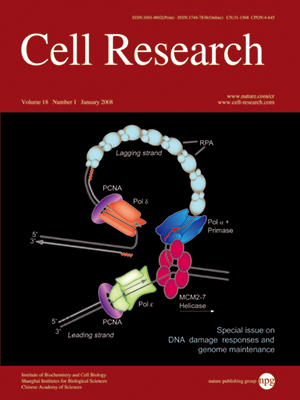
Volume 18, No 1, Jan 2008
ISSN: 1001-0602
EISSN: 1748-7838 2018
impact factor 17.848*
(Clarivate Analytics, 2019)
Volume 18 Issue 1, January 2008: 174-183
REVIEWS
DNA polymerase zeta (polζ) in higher eukaryotes
Gregory N Gan1, John P Wittschieben1, Birgitte Ø Wittschieben1,2 and Richard D Wood1
1Laboratory of Molecular Pathology, Department of Pathology, University of Texas Southwestern Medical Center at Dallas, Dallas, TX, USA
2Present address: Danisco A/S, Edwin Rahrs Vej 38, Braband 8200, Denmark
Correspondence: Richard D Wood(rdwood@pitt.edu)
Most current knowledge about DNA polymerase zeta (polζ) comes from studies of the enzyme in the budding yeast Saccharomyces cerevisiae, where polζ consists of a complex of the catalytic subunit Rev3 with Rev7, which associates with Rev1. Most spontaneous and induced mutagenesis in yeast is dependent on these gene products, and yeast polζ can mediate translesion DNA synthesis past some adducts in DNA templates. Study of the homologous gene products in higher eukaryotes is in a relatively early stage, but additional functions for the eukaryotic proteins are already apparent. Suppression of vertebrate REV3L function not only reduces induced point mutagenesis but also causes larger-scale genome instability by raising the frequency of spontaneous chromosome translocations. Disruption of Rev3L function is tolerated in Drosophila, Arabidopsis, and in vertebrate cell lines under some conditions, but is incompatible with mouse embryonic development. Functions for REV3L and REV7(MAD2B) in higher eukaryotes have been suggested not only in translesion DNA synthesis but also in some forms of homologous recombination, repair of interstrand DNA crosslinks, somatic hypermutation of immunoglobulin genes and cell-cycle control. This review discusses recent developments in these areas.
Cell Research (2008) 18:174-183. doi: 10.1038/cr.2007-117; published online 24 December 2007
FULL TEXT | PDF
Browse 1861


